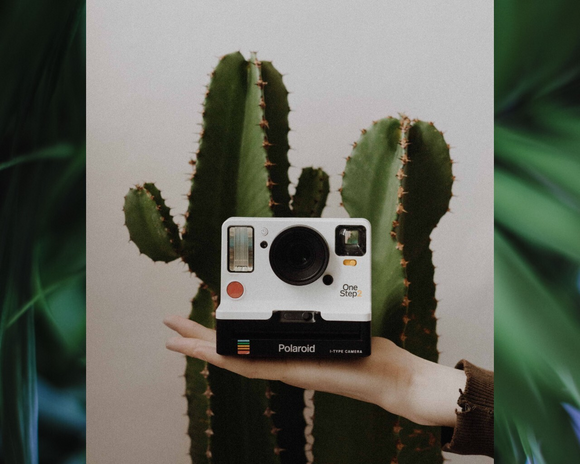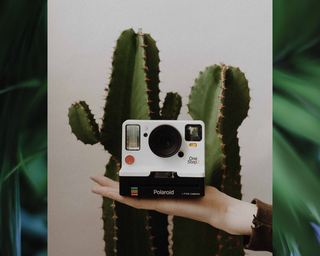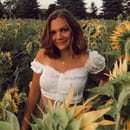The film is back in, and it’s a trend I hope sticks around! I still remember my mom sending me in-class trips as a child with disposable cameras. Looking back on it, she fed my love for photography from a young age and made sure I was about a decade and a half ahead of my time.
It’s hard not to get excited about the film. It’s contagious. It usually starts with one film friend snapping shots of all the other friends, who in turn are inspired to try it themselves. It’s that simple, yet it’s so much more complicated than that. Where does one even begin when it comes to film photography?
Often, you start disposable. You take a bus to Walmart or to Kingston Foto Source, and you buy yourself a couple of Fujifilm disposable cameras. You use them up, you develop them, you start the process over again. However, using disposable cameras is expensive and wasteful, especially if you’re going to keep shooting film. When I first bought a film camera, I could quickly justify the cost of it being that of about three disposables.
What to Know When Camera Shopping:
If you decide you want to graduate from disposables, there are lots of ways to secure yourself a camera! Oftentimes, photo stores such as Kingston Foto Source will have used film cameras you can purchase. Facebook Marketplace is also an excellent place to shop for a film camera, but be cautious when it comes to shopping for a used film camera and always try to test it out before purchasing if possible. Any seasoned film photographer will tell you that a broken film camera is usually not worth replacing and becomes nothing more than a paperweight. However, don’t let that scare you away from the used camera market. I got the film camera I use on Marketplace and will probably never get another- I love it so much!
When looking for a film camera, especially if you have never shot film before, look for a camera that shoots 35mm film and is automatic or semi-automatic, often called point-and-shoot cameras. While super old film cameras look cool, they can be tricky to use for a new photographer. If you want to shoot at any time of day, make sure you buy a camera that has a built-in flash. There are many film cameras that were made right before digital took over that look very similar to digital cameras. Look into these options- they’ll be the easiest to use and produce the best film photos for you. There are lots of different film cameras out there- don’t be afraid to ask questions and do your research. Once you get a camera, there are lots of user-friendly guides and videos online to help you along the way.
Your Guide to Shopping for the Film:
So then, there is the daunting task of film. Often, if you buy a film camera from a photo store, they will offer to sell you film to get you started. This is helpful, but it’s hard to know and understand what you’re shooting. There are lots of cheaper and accessible options for buying film outside of the camera store- let this be your guide to understanding those films, how they differ, and where to find them!
Your most accessible and cheapest film is Kodak Gold 200. The number indicates how sensitive a film is to light. The lower the number, the slower the film, and often, the less detail it will pick up. Kodak Gold 200 can be bought at any Walmart and is a great film for shooting during the day. However, I recommend using your flash as much as possible, in all situations, with this film in order to achieve the crispest results! This film creates a soft, grainy, golden effect. Here are some images I’ve captured on Kodak Gold 200:
Another fairly accessible and cheap film is Fujifilm Superia X-tra 400, which can be bought from Amazon or Urban Outfitters, or at a photo store. This is the film used in Fujifilm’s disposable cameras, so if you like that look, this film is your secret to recreating it on your point-and-shoot camera. This film creates grainy, greener tones, arguably even grainier than the images produced by Kodak Gold 200. Here is an image shot on Fujifilm Superia X-tra 400:
Finally, another accessible film quite different from the previously mentioned is Kodak Ultramax 400. This film is much crisper than those previously mentioned and has a blue tone. It is available on Urban Outfitters, Amazon, and photo stores.
You may also want to experiment with a black and white film. This film is fun, but is often much more sensitive to light- so bear in mind that your results may vary, and don’t lose hope after the first roll! Keep in mind that there are lots of different films available from photo stores, Urban Outfitters, and Amazon- just always be careful to pay attention to the price and the amount of film and shots you are getting, to ensure you aren’t getting ripped off, especially on Amazon!
Film Secrets, Tips and Tricks
The film takes time to master! Everybody’s photos will come out differently depending on your type of film and camera, but be patient with it and enjoy the experience. Again, my most practical tip is to always shoot with flash as much as possible- it saves pictures that are just on the cusp of being too grainy. Other than that, the film is meant to capture the moment, so let it do that! Don’t be afraid to ditch your phone, immerse yourself at the moment, and capture it for what it is on film!
Once you shoot your film, you can take it to Kingston Foto Source where they conveniently develop film for next day or 2 days pick up! If Kingston isn’t where you call home, don’t worry- Downtown Camera in Toronto offers a mail-in film developing service! Hope this encourages you to get out there and try it for yourself!





